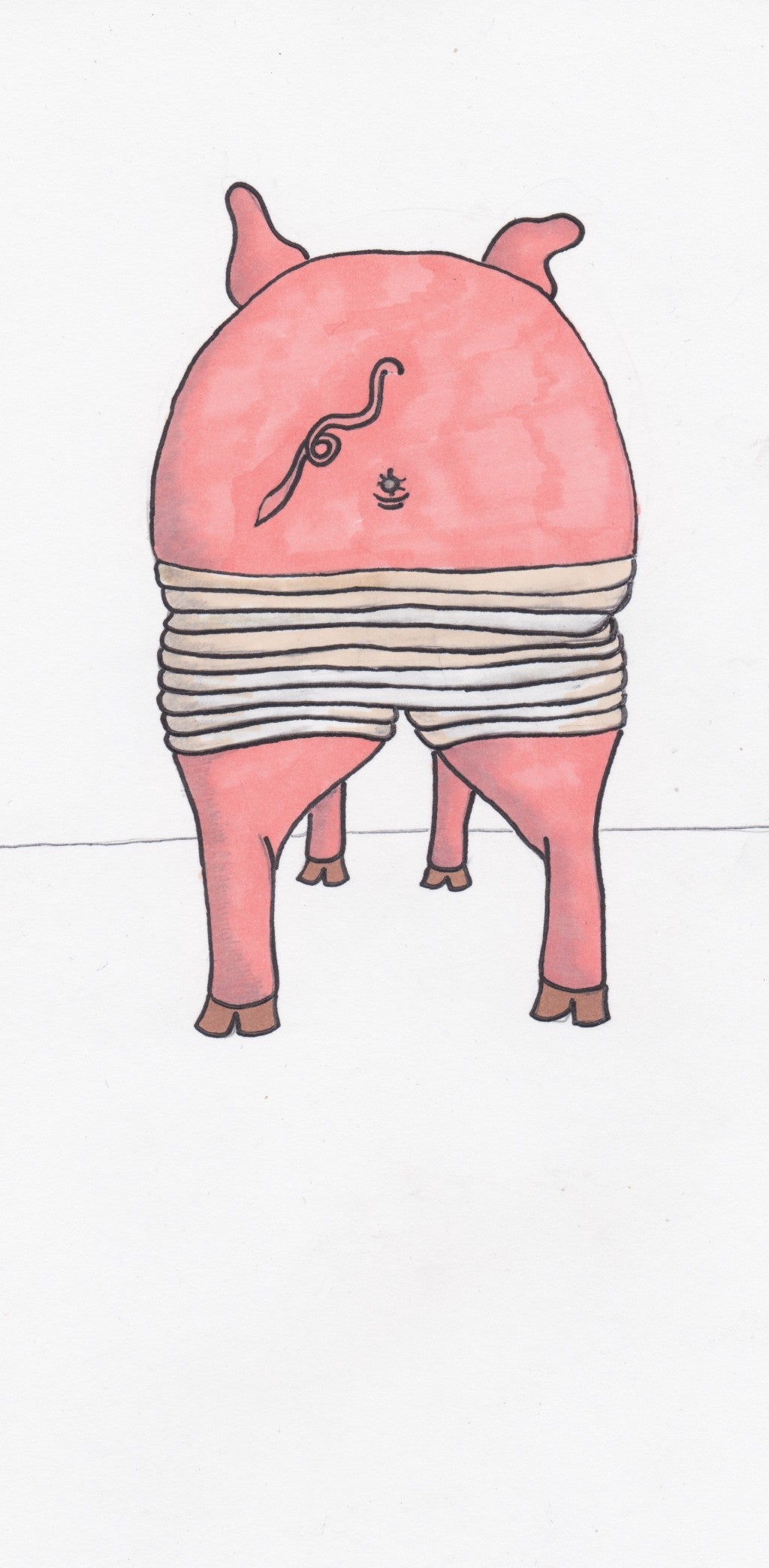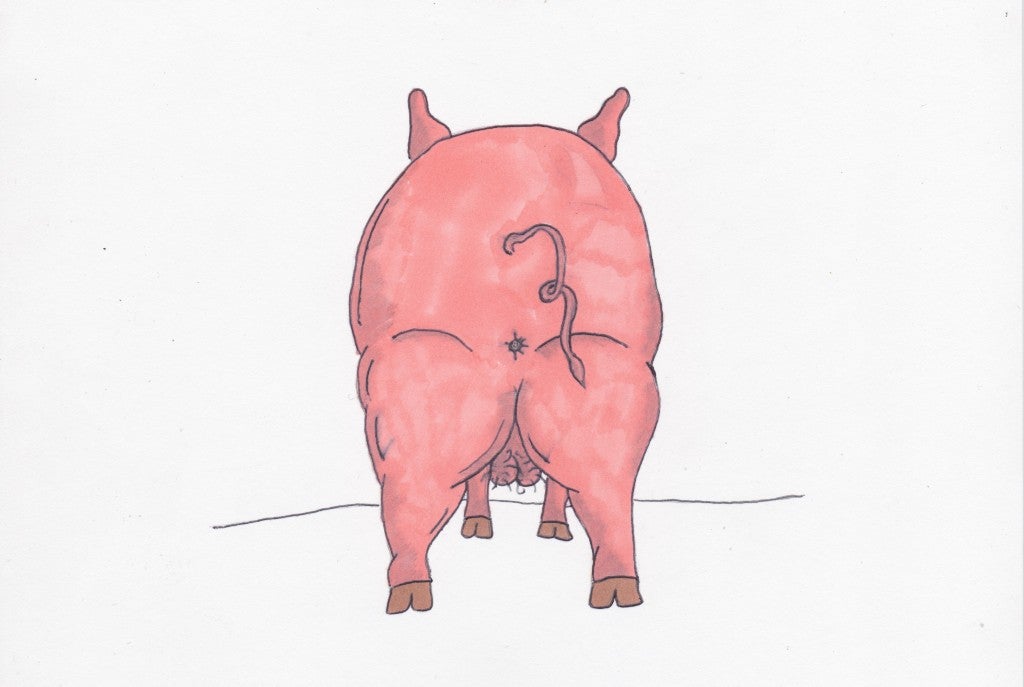Like some sort of demented bris, castration has long been a rite of passage for baby pigs — even those marketed as natural or organic. In the first two weeks of their lives, piglets are taken from their mothers and held down while a farmer makes an incision across their ball sacks sans painkiller, squeezing out their fledgling testes from within, while the creatures squeal, well, like pigs.
Why, exactly, must their balls go? Temperament is one factor: Castrated males (called barrows) are considered less aggressive than their free-balling, hornier brothers (called boars). But more importantly for ham lovers, barrows usually taste better since they’re free of “boar taint,” which smells as bad as it sounds and emanates from hormones that develop in the testes.
Obviously, there are more humane ways to avoid taint than to cut off an infant pig’s balls. Scientists have shown that piglets do feel the pain of castration, and the European Union has urged its members to phase out pig castration by 2018, following the lead of farmers in Switzerland, Britain and Spain, where alternative methods (e.g., selective breeding and earlier slaughter) are the new norm.
The United States lags behind, but according to Walter Jeffries—a farmer who stopped castrating his 400-some pigs and started blogging about his results — maybe not for long. He argues that they can taste just as good with their testicles as without them, the whiff of boar taint nowhere to be found.
How would you describe the meat of a tainted boar?
Two chemicals — androstenone and skatole — account for 99.9 percent of the taint you’ll ever smell if you’re ever so (un)fortunate. Androstenone is related to male sex hormones and has a musty, musky male smell. Quite enticing to the ladies — or at least so I’m told by my sows. Skatole is produced in the small intestines and has a bouquet like fine shit.

What compelled you to eliminate pig castration on your farm?
When castrating piglets you sometimes come across a hidden scrotal hernia. These aren’t noticeable until after you cut the pig’s scrotum open. But once you do, its small intestines squirt out into your lap. There’s no putting Humpty Dumpty back together again. The pig dies, or rather — as a compassionate person — you euthanize it. This is a waste of the pig’s life and puts it through a great deal of pain.
After this happened a couple of times, I thought to myself, There must be a better way. I began researching why we had historically castrated pigs, the chemistry and biology behind taint and how to prevent it without castration.
Ultimately, what became your “better way”?
I started by leaving a few boars uncastrated and letting them grow up to several months of age, slaughtering them and taste-testing them. Gradually, I took them to older and older ages. Whenever I tasted or smelled boar taint, I culled through our genetic lines to get rid of boars with those genes.
Over a two-year period I gradually increased the age of slaughter for the test boars from just a few months to beyond six to eight months (the typical slaughter age for market). This allowed me to make sure our genetics, our feed and our management were all taint-free. We still continue to do double-blind taste tests each week.
In other words: We bred the best of the best — about 5 percent of females and 0.5 percent of males — and ate the rest. Evolution works.
Is it unethical to castrate boars?
I don’t think so. But ethics and morality are such a squishy, slippery cultural thing. I do consider castration to be inhumane — it causes unnecessary pain. That’s easier to grasp and define. Nor do I find castration to be a useful tool in farming. It simply isn’t necessary. For me at least, it’s better to breed, feed and manage the problem away.
Besides, boars look like body-builders: They grow faster and are about 10 percent more efficient than barrows at turning feed into meat. Barrows are fattier. And in the end, customers want meat, not fat.
Will the EU ban on castration eventually be adopted here in the United States?
In time. But I don’t think castration should be banned by law. This is the sort of thing that’s better handled through market forces. Consumers should vote with their pocketbooks and by spending their money with the farmers who employ the practices the consumer believes in.
Do the pigs have any clue they’re being turned into eunuchs?
Not really. The cut is painful, but the pigs have no concept of what they’ve lost. For example, I once had to cut a pig’s leg off because it was severely injured. It never understood that the leg was gone. It didn’t hold it against me. It still walks trying to use that leg with each step. It’s a different way of thinking. So we need to be careful about transferring ‘care’ across species and confusing pigs with people. They’re great at being pigs, but they think much differently than human beings.

